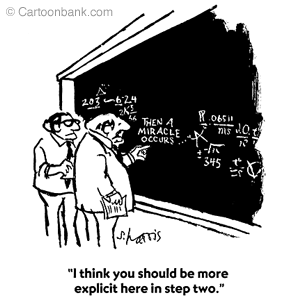It seems that most of the talk in recent months about the ROI (return on investment) of a college degree from a given institution has been focused on the degree to which new graduates from that institution can get well-paying jobs related to their major. For liberal arts colleges and those of us who believe in the importance of a well-rounded education, the whole idea of assuming an inherent connection between major choice and career seems problematic. Not only are there plenty of majors that don’t have a natural correlate on the job market (e.g., philosophy majors come to mind), but we are also regularly bombarded with the claims that individuals in today’s world will hold multiple jobs in multiple professions over the course of their working careers. Thus it seems odd to suggest that a college’s effectiveness could be pinned to the proportion of graduates who have landed jobs in their field within six months of graduation.
One data point from our survey of recent graduates seems to highlight this conundrum. Nine months after a class of seniors graduates, we ask them to complete a survey that asks a variety of questions about their current status, the degree to which their Augustana experience helped prepare them for their present circumstance, and the degree to which they believe that they are on the right long-term path.
One of the questions we asked our 2012 graduates last spring (about nine months after they had received their BA degrees from Augustana) was:
“Have your long-term professional goals changed since you graduated from Augie?”
The distribution of responses was revealing.
| Not at all |
48% |
| A little |
21% |
| Somewhat |
20% |
| Substantial |
4% |
| Completely |
3% |
In other words, fewer than 50% of the 2012 graduating class considered themselves on the exact same long-term path that they were on when they walked across the stage to collect their diplomas. In addition, over a quarter of the respondents said that their long-term goals had changed “somewhat,” “substantially,” or “completely.”
I believe the result of this single question holds critical implications for our efforts to best prepare our students to succeed after college. First of all, this finding supports what we already know to be true – many of our students are going to change their long-term goals during their first several years after graduation. This is what happens to young people during their first foray into the world of working adulthood. We would be foolish to tie ourselves too tightly to a data point that doesn’t allow for these natural developments in the life a young adult.
Second, rather than mere job or graduate school placement, we would be smart to begin thinking about our students’ post-graduate success in terms of direction and momentum. Our students need to develop a clear sense of direction in order to decide what the best “next step” is for them. In addition, our job is to help them know when to take that “next step,” whether it be getting into the right graduate school or finding the right job or taking advantage of a once-in-a-lifetime opportunity that will better position them to move in the direction they have chosen for themselves. If we can do that, then no matter what happens to our students in the years after they graduate, they will be better able to succeed in the face of life’s inevitable challenges.
In concert with a sense of direction, our students need momentum. This momentum should be self-perpetuating, cultivated by the right mix of motivations to handle setbacks and success. More importantly, it needs to be strong enough to thrive in the midst of a change in direction. This means that we develop their ability to be autonomous while holding themselves to high standards. It means that they know how to be strategic in staying true to themselves and their goals no matter the distractions that might appear.
This doesn’t mean that we shouldn’t care about our students’ success in applying to graduate school or entry-level jobs in a given profession. On the contrary, we absolutely should care about statistics like these – especially if they support a student’s chosen direction and momentum. But we should remember that a successful life isn’t etched in stone upon graduation from college. And we should have the courage to track our students’ life trajectory in a way that doesn’t limit both us and them.
Make it a good day,
Mark

